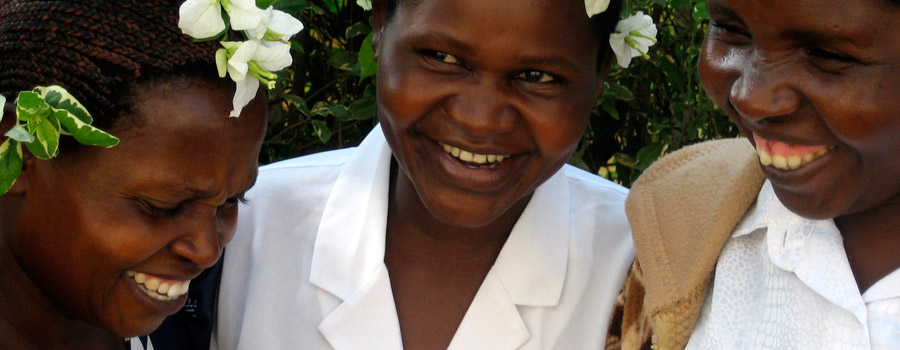Preventing Fistula :
At the Community Level
Fistula Care’s community-level interventions to prevent obstetric fistula included strengthening the capacity of community-based organizations, religious and community leaders, community-level health committees, and volunteers to monitor and promote maternal health care–seeking in their villages.
These community-level efforts have focused on raising awareness about obstetric fistula and other pregnancy-related risks, promoting household preparation for birth and the routine use of skilled maternal health services throughout pregnancy, childbirth, and the postpartum period, and supporting the use of family planning.
To support these efforts, Fistula Care developed training packages for use with community-level committees and volunteers—in French, for use in Guinea and Niger, and in English, for use in Uganda. The training packages, tailored to country contexts but easily adaptable to other settings, were designed for use in orienting community-based cadres—often with low or mixed levels of literacy—to key maternal health topics and in building their skills related to communication and counseling, pregnancy monitoring, and record keeping. Simple reference materials and job aids on birth preparedness, obstetric risks and danger signs, and male partner involvement were developed to support trained volunteers in conducting house-to-house visits to monitor pregnancies and in leading community-level dialogues and awareness-raising activities about maternal health and fistula prevention. In addition, simple pictorial record-keeping tools were developed to enable low-literate volunteers to document important preparations for birth and maternal health care–seeking among pregnant women in their communities.
This section contains curricula and training modules developed by Fistula Care and partners for use with community health workers, an evaluation of community level prevention efforts, technical briefs documenting program models related to community prevention efforts, and tools and job aides for health workers to use with clients.
View the Resources and Tools.
![[ Skip Navigation ]](../../data/images/c.gif)



